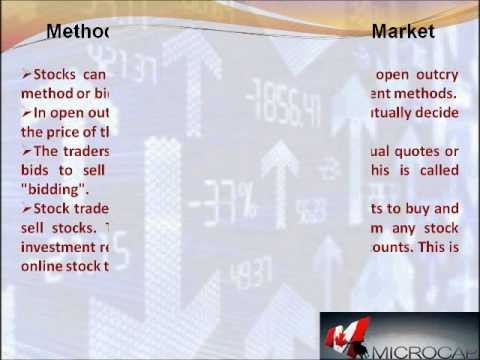Stock Trading Basics For Beginners
Post on: 3 Сентябрь, 2015 No Comment

Day Trading Basics
On this page I’m going to go over some stock trading basics, specifically for those of you that are completely new to any form of trading or investing of stocks. I’m talking nuts and bolts here. Really simple stuff. If you already know the ABC’s of stock trading then just move on down the button bar to the left to more involved day trading subjects, because this section my friends is newbie-ville.
The material will of course be slanted towards day trading basics, but you will need to know this material before moving on to other parts of this site in order to understand it’s contents. As with all professions and businesses, certain elements and rudimentary information must be known prior to proceeding with more complex instruction.
When finished you’ll understand stock trading terms, such as, short selling, bid & ask, filling the gap, pullbacks, multiple time frames, etc. I’ll also be showing you using simple charts or diagrams of some stock trading basics
that include descriptions of different types of stock charts, types of stock orders, candlestick patterns, price chart patterns, and whatever else I think you’ll need to start your journey as a day trader.
Much of what you’ll learn here can also be applied to day trading instruments other than stocks if you choose to do so. You’ll find that many of these stock trading basics will cross-over and apply to day trading futures, commodities, options, bonds or currencies, as well. In my experience, no matter what you’re day trading and no matter what time frame you use, much of this information will be overlapping.
So, if you think there’s a possibility that you might want to be day trading emini futures, or maybe be a swing trader instead of a day trader, no problem, you won’t be wasting your time learning this material.
First, I’d like to point out the difference between trading vs investing. My website is all about trading — day trading. An investor in stocks will buy shares in a company with the intention of holding those shares for a long period of time — perhaps decades, in an effort to earn money from those stock shares either through price appreciation, dividends or both. That’s obviously not what’s going on here. Day traders are interested in moving in and out of stocks quickly and don’t even need to know what service or product a company provides.
One of the most elementary of all stock trading basics is that traders, no matter what type, are trying to accelerate their earnings from stocks by cycling in and out of the shares at a far higher frequency than investors. Traders are interested in compounding their returns as quickly and efficiently as possible. No where is that more evident than in day trading.














